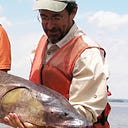Lessons from Lost Cities, Visions of Altered Skies
Since the early days of the pandemic, I’ve hosted hundreds of episodes of Sustain What, my webcast from Columbia’s Climate School exploring constructive paths to take when complexity and consequence collide. Few segments have been as bracing and, yes, fun as this one with the Anthropocene-focused writers Elizabeth Kolbert and Annalee Newitz on their new books, Under a White Sky: The Nature of the Future, and Four Lost Cities: A Secret History of the Urban Age.
I encourage you to save it for some quiet moment when you want to step back from the news flood and reflect on where humanity has been (Annalee’s look at four lost cities) and where we’re bound (Betsy’s thrill ride through technologists’ efforts to unmake the unnatural mistakes we’ve made so far — from carp-filled waters to the CO2 surge in the atmosphere).
You can also watch on Periscope, Facebook and Linkedin.
I don’t want to spoil the fun by summarizing the chat. I just challenge you to click to some random point and not become intrigued enough to watch more — and hopefully share the video with others.
Here’s a bit of background on my guests:
Newitz is both a science-focused novelist and pioneering science journalist. A founder of the io9 website and former editor-in-chief of Gizmodo, Newitz is a contributing opinion writer for The New York Times and author of several novels and nonfiction books, including Scatter, Adapt, and Remember, a book on the megadisasters we’ve outrun — so far.
Newitz’s new book, Four Lost Cities: A Secret History of the Urban Age, reveals fascinating new insights about H. sapiens’ 10,000-year habit of urbanization, including the growing realization that the tropics, not the temperate zones, were the first place we tried this lifestyle.
Kolbert has been a staff writer for the New Yorker since she moved there from The New York Times in 1999. Her new book, Under a White Sky — The Nature of the Future, explores the tangle of unintended consequences left in humanity’s wake as we have dominated a host of Earth systems. She goes on a worldwide journey examining how some scientists and technologists are trying to use the same ingenuity that got us in trouble to wiggle out of calamity. Her previous book, The Sixth Extinction, won a Pulitzer Prize. Follow Kolbert’s work in The New Yorker.
Explore Newitz’s work at http://techsploitation.com and sign up for her newsletter, The Hypothesis. A new post points to sone great excerpts from the book: “The moose in the swimming pool, and other urban futures.”
If you have time check, you might also check out the recent book I collaborated on with the world-roaming photographer George Steinmetz: The Human Planet — Earth at the Dawn of the Anthropocene.
Explore past episodes of Sustain What here:
